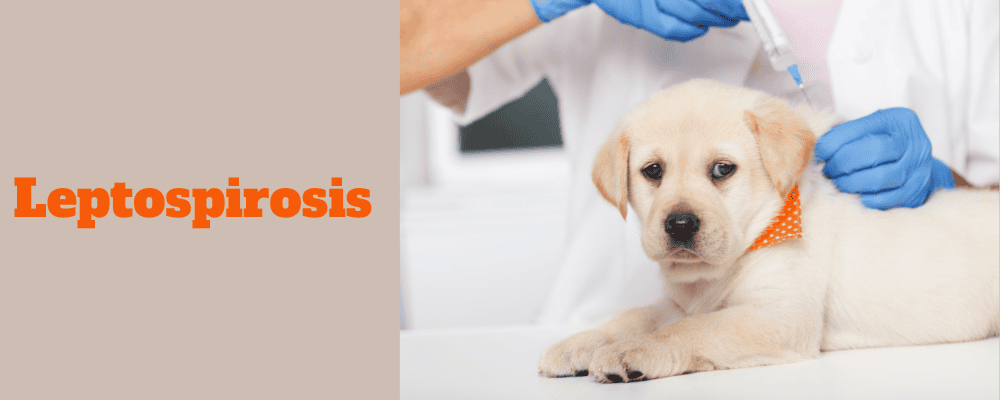Leptospirosis is an important and relatively complex infectious disease of dogs. It can affect almost all species of warm-blooded animals, including humans.
Recognition of the disease is sometimes difficult because clinical signs will vary depending upon the particular serovar, or strain, of the Leptospira organism that has infected the dog. At least ten different serovars are known to infect dogs. Vaccines contain antigens (proteins) which stimulate immunity against only 2-4 of the serovars, so complete protection is not possible.
Prevalence
Leptospirosis occurs on a worldwide basis, especially in subtropical climates. Although the organism cannot reproduce outside of the host animal, it can survive for prolonged periods of time in water or wet soil. It is found in both urban and rural environments. Most cases in dogs are reported in the summer and early fall of the year. It is more common where there is exposure to wildlife or rodents, and where there is standing water.
Leptospirosis can develop in any age, breed or gender of dogs.
Causes/Transmission
The leptospire organism is a unique type of bacterium called a “spirochete.” The name is derived from its slender, coiled (spiral) appearance under the microscope.
The organism is shed in the urine of the infected animal. It enters the new host animal by penetrating mucous membranes after ingestion or by entering through abraded (open) skin. Infrequent routes of transmission to new hosts include venereal contact, through bite wounds, and through the placenta.
Clinical Signs
Once the organism has infected the dog, it can replicate (reproduce) in many different tissues. In dogs, the greatest numbers of organisms are usually found in the liver and kidneys. The signs can be dependent upon which strain of the organism is involved. For example, one particular strain of Leptospira impacts primarily on the liver, whereas another involves the kidneys.
In many dogs, the disease is subclinical, meaning that there are no specific signs. Dogs who have a rapid onset of signs following infection (peracute infection) will have fever, depression, weakness, vomiting, and muscle pain. The skin may have a jaundiced (yellow) tint and the mucous membranes (gums) will be pale. The pulse and respiration rates may be increased and shock will develop. If clotting problems occur because of damage to the lining of blood vessels, hemorrhage from the nose or bowel develops; obvious bruises will appear under the skin. If the disease progresses to this point, death can rapidly follow from liver or kidney failure.
Dogs who do not develop more acute infections or survive such infections may go on to develop chronic liver or kidney problems. In fact, the majority of dogs do not have the peracute infection described above, but are chronically infected. The infection may be subclinical, meaning that there are no apparent signs.
Diagnosis
In many cases, a presumptive diagnosis can be made based on the dog’s clinical signs, vaccination history, and potential exposure to the organism.
Diagnosis is complicated because it is difficult to find the organism in tissue samples or urine. The most common laboratory test involves detection of increasing levels of antibody (protein) in the blood over a period of two to four weeks. The antibody is produced as an immune response against the organism. A newer test called the polymerase chain reaction test (PCR) can sometimes detect DNA of the organism in urine samples.
Treatment
Treatment of infected dogs involves appropriate antibiotic therapy and good supportive care.
Antibiotic therapy involves two phases. The first phase is designed to inhibit reproduction of the organism, decrease shedding of it into the urine, and to protect the liver and kidneys from fatal complications. Most commonly, penicillin-type drugs are given for about two weeks and are followed with another antibiotic. The second phase is aimed at eliminating residual organisms from the kidney. Appropriate antibiotics can include drugs in the tetracycline family.
Supportive care of animals who show clinical signs will primarily involve intravenous fluid therapy. Fluids support the animal’s hydration status and blood pressure. Fluids also help preserve blood flow through the kidneys; this is important if kidney function is to be salvaged.
Because of the number of organ systems that can be affected by leptospirosis, blood work (cell counts and blood chemistries) need to be performed frequently during early stages of treatment.
Prognosis
The prognosis is dependent upon several factors, including the strain of the organism, the dog’s vaccination status, damage done to individual organ systems, and the dog’s response to treatment. In general, dogs that have a peracute infection are more likely to die than those more chronically infected.
Transmission to Humans
There is risk of the infected dog transmitting leptospiral organisms to humans. As such, special precautions must be taken when handling these patients; in particular, contact with the dog’s urine must be avoided. Even for dogs that appear recovered, the organism can be shed into the urine in large numbers for many months after treatment is completed.
The Centers for Disease Control receives reports of about 50-100 human infections per year.
Prevention
Most commercially available vaccines protect dogs against some serovars, but they do not provide immunity against other important serovars. Vaccines that protect against up to five serovars are under development. Vaccines reduce the severity of the disease but do not prevent some dogs from becoming chronic carriers of leptospirosis.
In areas where leptospirosis is prevalent, vaccinations should be boostered every year. If the risk is very high, boosters may be needed every 6 months. Leptospirosis vaccines can cause adverse reactions. For dogs that have had a reaction to the leptospirosis vaccines, recommendations are made by the veterinarian on an individual basis.
If your dog is known to swim in, or drink from sources of fresh water such as puddles, ditches, lakes, ponds or streams, then they are at risk for leptospirosis. Ask your veterinarian about getting the vaccine for your dog.
